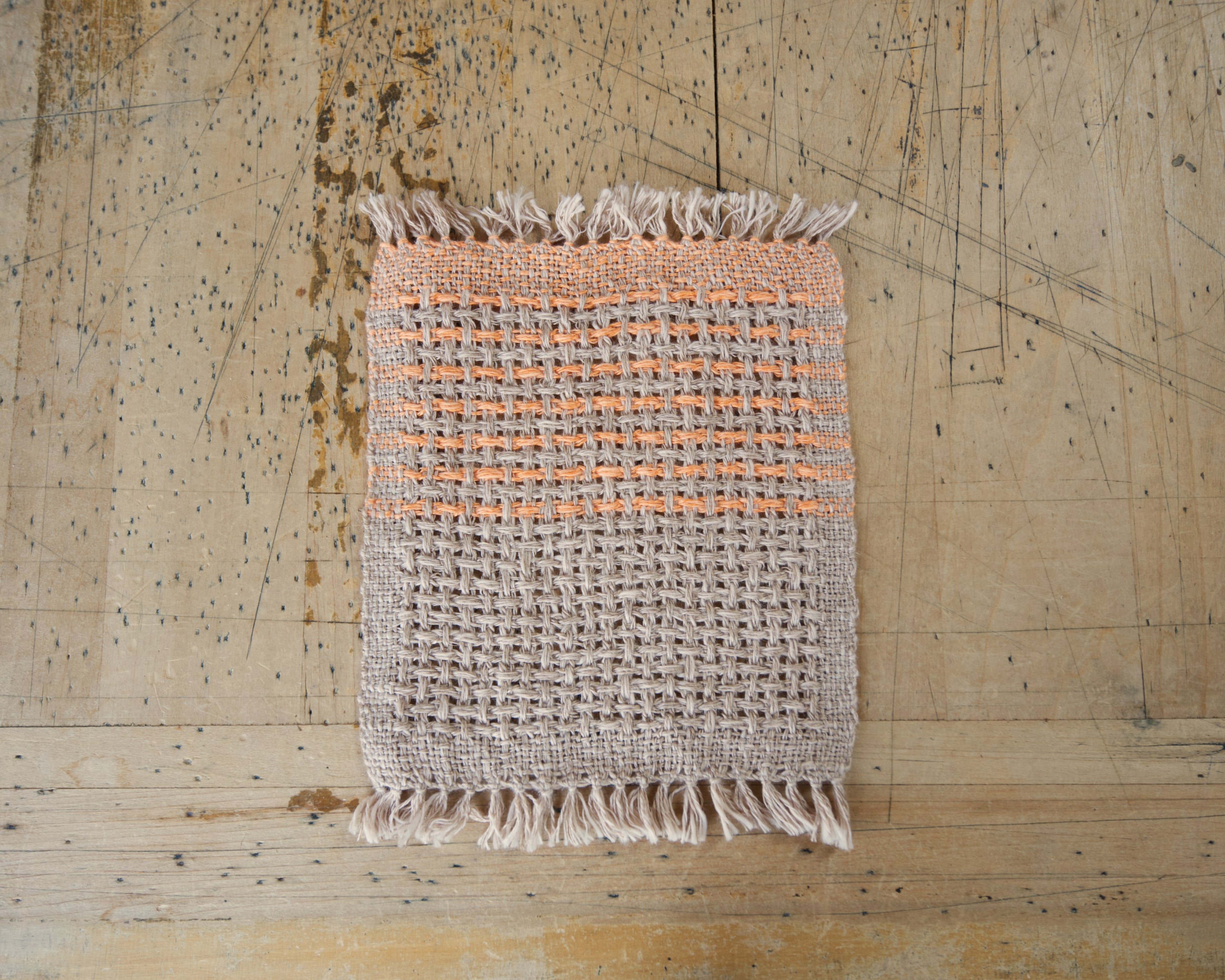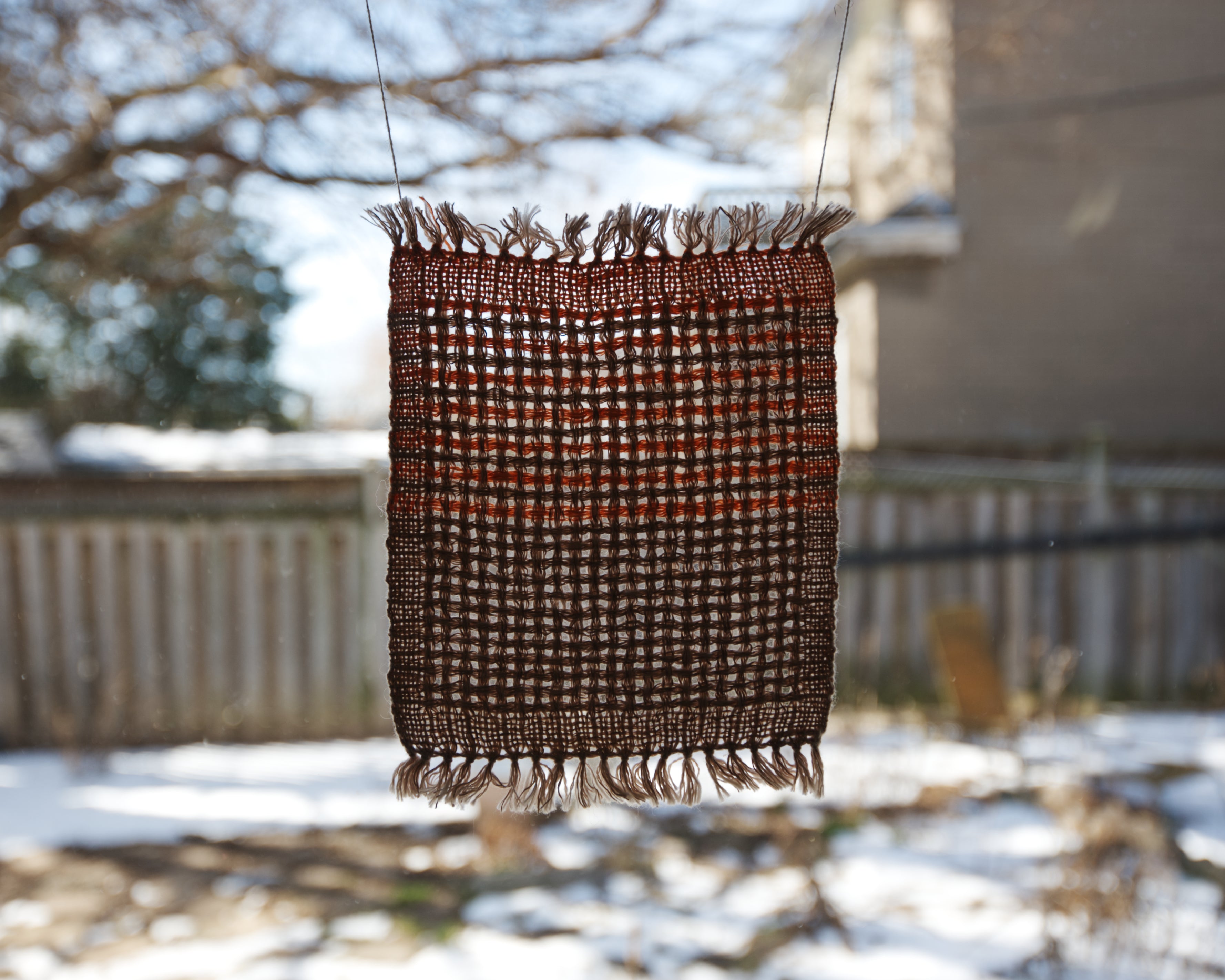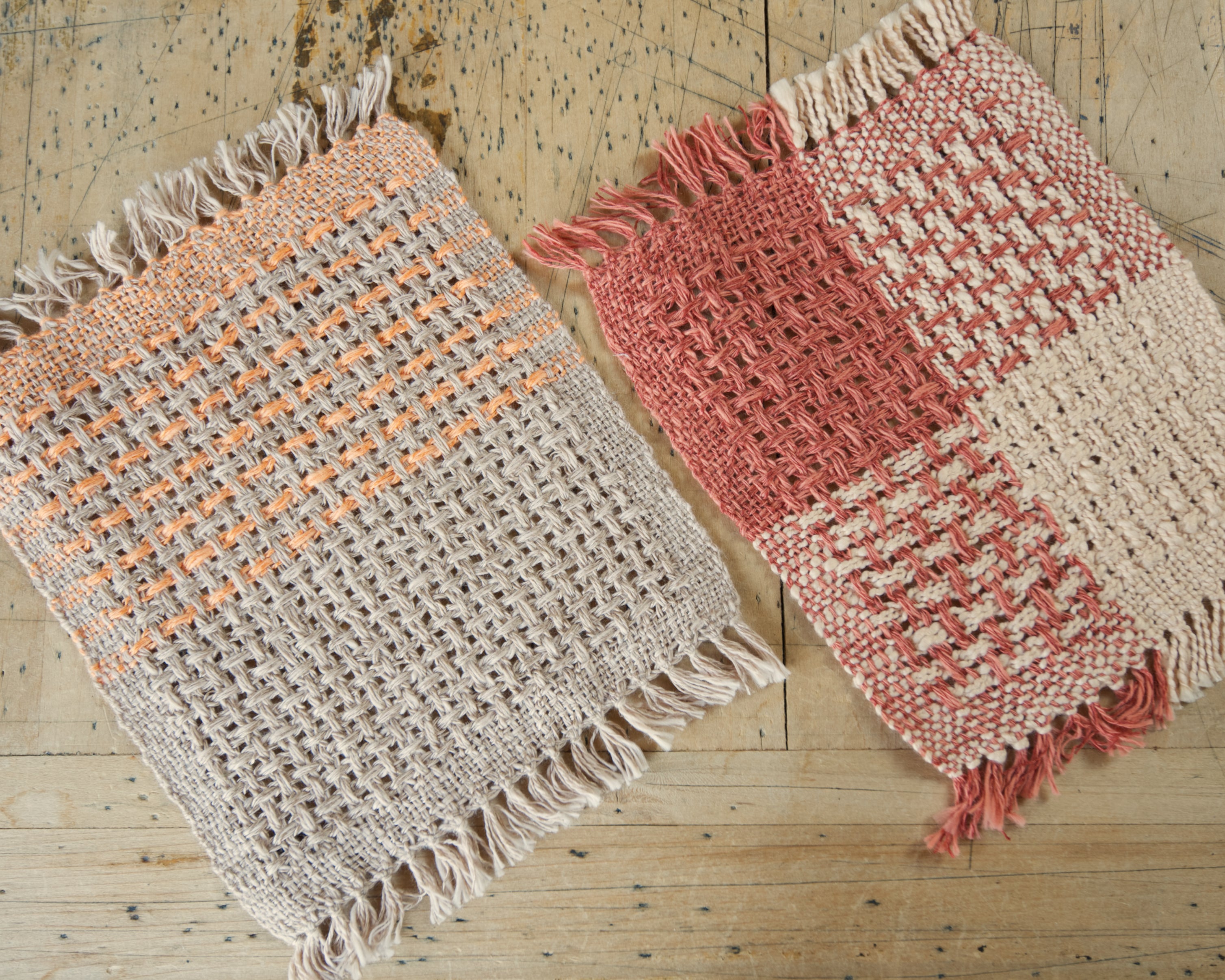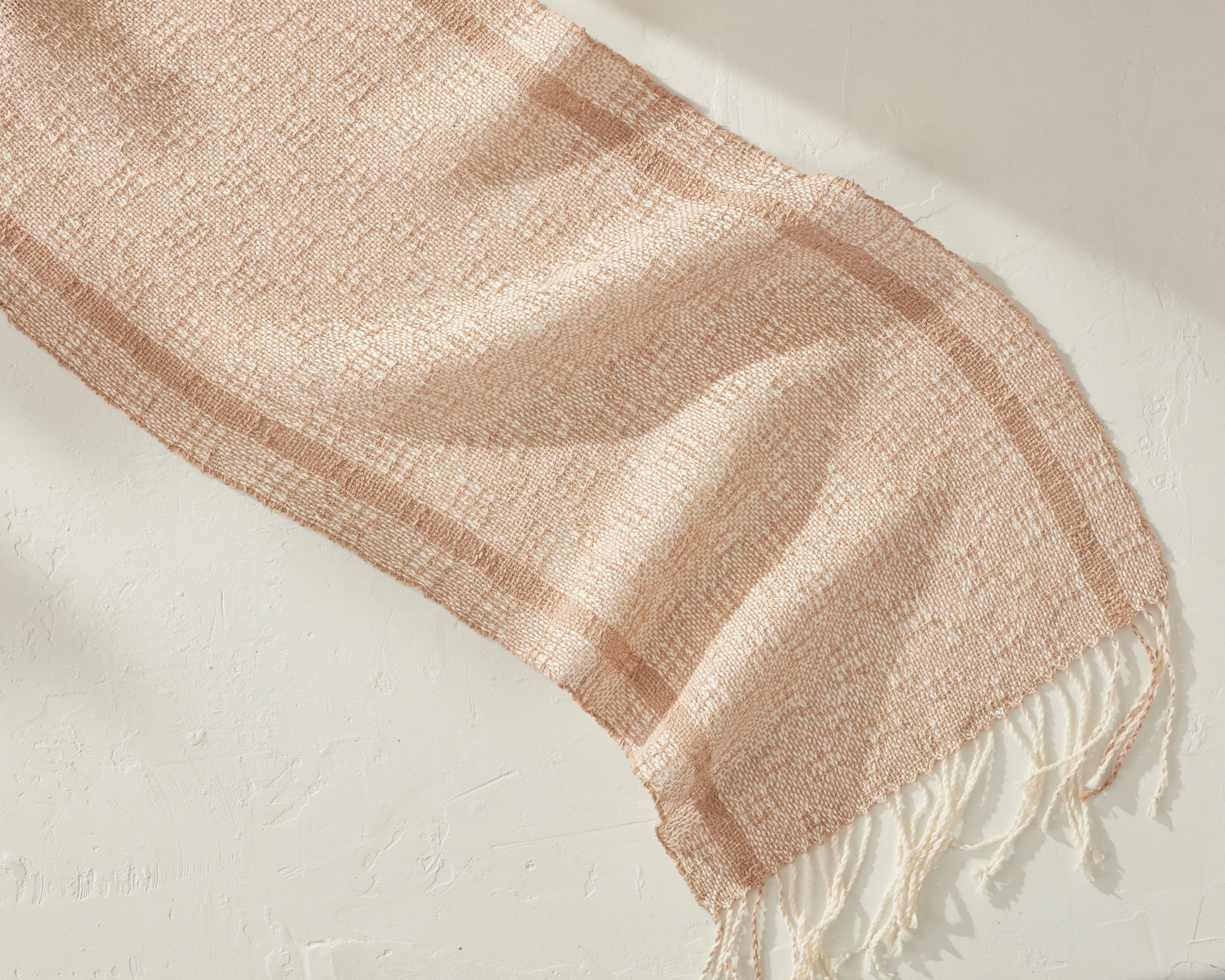Shopping Cart
*continental US addresses only
*continental US addresses only
Your Cart is Empty
Weaving is full of many magical transformations of yarn, color, and structure — you only have to look as far as the Gist pattern archive to see a sliver of all the ways that one yarn or one color can be used to create radically different cloth. However, one of the most exciting transformations that can be done with plain string and four shafts has to be lace weaves.
Not a true lace in the sense of bobbin lace or crochet lace, woven lace is a weaving category all to its own, where the pattern only appears after a dip in water, much like an analogue film photograph emerges in the darkroom.
In the next few articles, we’ll examine several of the more common loom-controlled lace weaves. If you have a rigid heddle, don't worry — Jennifer Mao will be covering hand-manipulated lace weaves soon!
When I think of lace, frothy veils, stiff Renaissance collars, and delicate curtaining all come to mind. However, most of these examples are outside the realm of woven lace and are created by other means, like bobbin or crochet lace. These techniques create wonderful swoops, flowers, or complex patterns and are made using very different tools like bobbins, cushions, and hooks. True hand-made lace is often created one delicate motif at a time, manipulating many small threads.
Woven lace, in contrast, can be thought of as many carefully controlled skipped threads that allow the warp and weft to move after weaving and washing. This movement opens up small holes in the web and can create a similar sheer, hole-y, and patterned fabric. While you can’t weave pretty flowers in lace on only four shafts, you can make beautiful textures, transparent fabrics, areas of texture and openness, and tabby and mock tabby.
Perhaps the best place to start learning about lace weaves is with canvas weave. Embroiderers will already be very familiar with this structure — it’s available commercially as monk’s cloth, where the regular small holes create an easy grid on which to build images. It looks like a grid of bumps with open holes at the vertices.
Let’s start by taking a look at a monk’s cloth draft. It’s made of two repeated threading patterns: 4, 3, 3, 4 and 1, 2, 2 ,1. No true tabby can be woven in canvas weave because of those doubled ends, but you can get a very close approximation by threading 1, 4.
In my mind's eye, I see canvas as paired threads separated by two plain weave picks, which is also how it works as you treadle. Two plain weave picks from the opposing block separate each doubled pick.
Creating doubled picks in the warp and weft allows the threads involved in each block to stick together after washing, creating clumped units with holes in between.
To accompany this article, I wove a few canvas samples using Gist Yarn. My first sample was made using half Duet and half Mallo in the warp and weft. I used a mock-tabby border on each side. I repeated the same yarns in the warp and weft so I was able to see several different variations of material: Duet on Duet (Rust), Mallo on Mallo (Clay), Duet on Mallo, Mallo on Duet.

Canvas has a lovely rhythm while weaving, and is simple and straightforward to remember. Treadling follows the same pattern as threading: you weave a locking pick of plain weave followed by two paired picks, followed by one plain weave pick. These doubled picks need to be anchored in place, so I would always weave canvas with a floating selvedge at each edge.
In my experience of weaving lace, the hardest part is always trusting the materials, because it doesn’t look like much on the loom! I can recall my first time using a lace structure, weaving and unweaving the same inch because it didn’t look “right” — no holes or patterns were emerging! When I finally gave in and finished my project, I saw the error of my assumption as soon as I loosened my loom tension — it was like an out-of-focus image slowly coming back into view.
Only after I washed the project did I realize I had woven everything correctly! The magic trick to lace weaves is that they look flat and incorrect on the loom. Once washed, the floats and skips you’ve created under tension relax and move into their true positions, creating the holes and patterning you expected. Therefore, when I weave lace weaves I focus on getting my beat firm and even — I trust that the threads will do their thing after the project has been washed!
Each lace draft we’ll examine in this series may behave a little differently depending on the choices you make as a weaver (no different than any other project!). The main thing I keep in mind with lace is sett.
Because they’re made of floats, very loosely sett weaves are at risk of becoming sleazy, a term for loose, characterless cloth. Sleazy cloth might come apart or catch more quickly, it may not offer enough rigidity to fulfill its purpose, and the pattern may quickly become destroyed because of use. Like all weaves, sett is key to making good cloth, but with lace weaving it may have have a more significant effect than in other structures.
I made two samples to show you the effect of sett on canvas weave. In the first sample, I felt that the Mallo on Mallo corner was perfectly sett: The threads did not move, it felt sturdy, and the threads were stitched down and held together well enough by their neighbors. But in contrast, the Duet on Duet corner felt on the verge of coming apart — the motif was spaced a little too wide, so the group of threads felt more disconnected.
In my second sample, I increased my sett and this was a huge improvement! In this sample I used Duet in Dune as my warp, and divided the weft into Dune and Apricot stripes and solid Dune on Dune. The groups of thread felt connected and firm, with neatly spaced holes in between each group. When I held it up to my studio window, I could see the tidy structure of canvas, which feels really wonderful in hand.



There’s plenty to explore in canvas weave — I wonder what it would look like in Ode or Array, and I think the color mixing qualities are exciting! Next time we’ll be looking at Swedish and Bronson lace, two very closely related structures that give a different effect than canvas. If you’d like to give Bronson lace a try before then, I recommend the free Café Table Runner pattern that uses two cones of Duet.

Amanda Rataj is an artist and weaver living and working in Hamilton, Ontario. She studied at the Ontario College of Art and Design University and has developed her contemporary craft practice through research-based projects, artist residencies, professional exhibitions, and lectures. Subscribe to her studio newsletter or follow her on Instagram to learn about new weaving patterns, exhibitions, projects, and more.